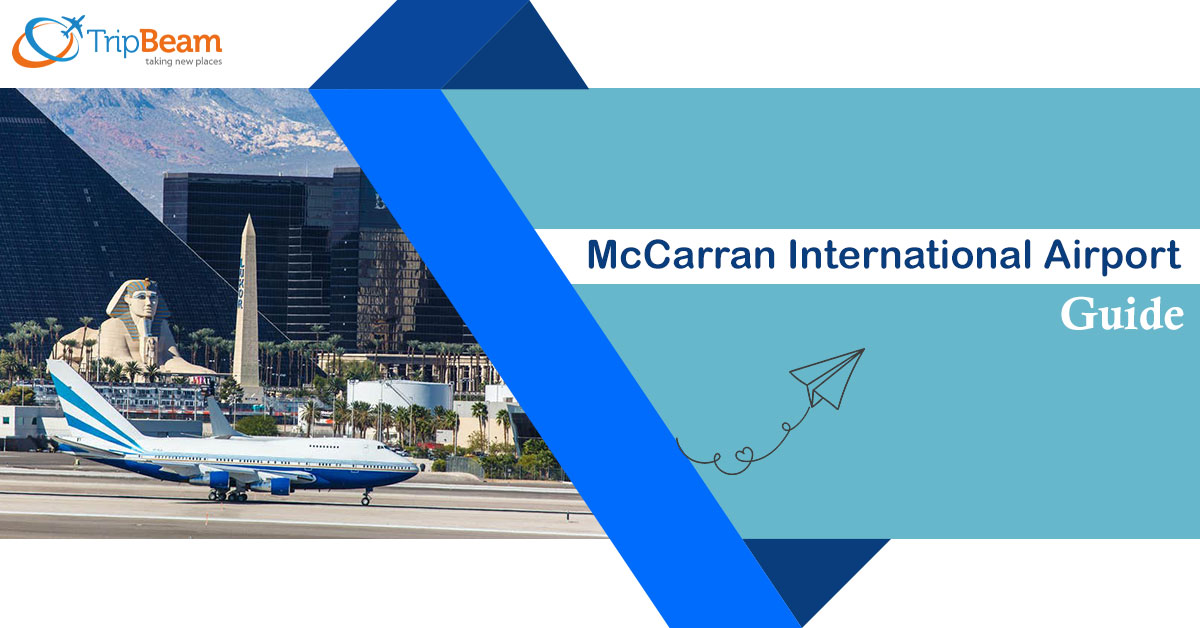
McCarran International Airport (LAS) is the chief airport serving the Las Vegas Valley in Nevada. It is a focus city for multiple airlines such as Southwest, Frontier, Spirit, Sun County, JSX, and Allegiant Air.
The airport operates nonstop flights to several continents, including North America, Asia, and Europe. Since its establishment in the 1940s, the airport has a reputation for adopting innovative technologies such as the tram system for serving the passengers.
In this article, you will get an idea to navigate through the facility in a convenient way. For instance, the airport has two terminals that are not interconnected. Therefore, before you book flight tickets for Las Vegas, you must know which terminal you will be arriving at.
As you read on you, the article will introduce you to the layout and facilities of the McCarran International Airport.
McCarran International Airport Terminals
McCarran Airport has two separate terminals, namely Terminal 1 and Terminal 3. Both the terminals have a total of 110 aircraft gates, spread across five concourses. Moreover, each terminal has its own designated areas.
These include check-in and ticketing, parking areas, baggage claim, shopping, dining, and other concessions.
1. Terminal 1
Terminal 1 started operations in the year 1963. Almost seven years later, the terminal underwent an expansion program that lasted from 1970 through 1974. The result was A and B gates.
When you book tickets for airlines that operate from this terminal, you will observe that there are four concourses that are all connected to the pre-security area.
Further, if you want to make a flight booking from the airport, head to level 1, you will also find the baggage claim area here. As you proceed to level 2, you will come across three security checkpoints.
Also located on level 2 is an esplanade that features numerous shopping, dining, and other retail outlets. Moreover, if you are active military personnel or a family member of the same, you can access the USO lounge on this level.
Moving west of the pre-security zone, there are two Y-shaped concourses of A and B. If you head south to form the security, it will lead you to C gates. Passengers can hail a green tram to reach Concourse C.
Next, heading east will take you to the satellite Concourse D. It started operations in 1998. Today, the concourse houses three lounges. One of them is the Centurion Lounge that you can access if you are an American Express cardholder.
The other one is the Club at LAS that you can access after paying a fee. And lastly, there is a United Club.
If you use the blue line of the tram system, you can move between the pre-security area and the D Gates. Speaking of which, gate D22 is the only gate that can accommodate the double-decker Airbus A380. And it is the only 3-jetway gate in the airport.
2. Terminal 3
If you are traveling from international locations such as flights from India to Las Vegas, you will arrive at Terminal 3. However, the terminal also facilitates a handful of domestic US flights.
Level zero at Terminal 3 houses the baggage claim area, as well as the customs. There is also a USO lounge for military personnel and their family members.
Further, level two of this terminal is where you will find all the boarding gates. Moreover, this is where you check-in for your flight. The security and a Club at LAS is also on level two.
It doesn’t matter whether you book flight tickets for business class or economy, you can relax at the Club at LAS, as it is open for all.
As for the boarding gates, there is an equal number of those for domestic as well as international flights. There are a total of 14 boarding gates, out of which E8-12 and E14-15 facilitate domestic traffic, and E1-7 serves international traffic.
To handle wide-body aircraft effectively, four of the international gates are equipped with two jetways.
If you book air tickets for Air Canada, United Airlines, Sun County Airlines, Frontier Airlines, and Hawaiian Airlines, you will check-in and receive baggage at Terminal 3.
However, the departure for the same will be from D gates. The Red Line of the tram system connects Terminal 3 to boarding gates in the D concourse.
Automated People Movers at McCarran International Airport
One example of an innovative approach to serving passengers is the people movers, which is basically a tram system that facilitates movement within the McCarran airport.
There three lines serving passengers. These are Red, Blue, and Green. The Green and Blue lines connect the main terminal building to C gates and D gates, respectively. The Red Line, on the other hand, connects D gates in Concourse D to Terminal 3.
The lines were named after colors in the year 2016. This was to shun the confusion of the passengers.
1. Green
The Green Line was the pioneer of the tram system. It was the first people mover that began operations in 1985. The line links Terminal 1 with C gates that chiefly serve Southwest Airlines.
GreenLine tram has two quarter-mile-long tracks laying parallel to each other. On both of these, a two-car train operates to and fro. The trains were upgraded to the current Bombardier Innovia APM 100 from the older Adtranz C-100 in the year 2008.
2. Blue
The blue line is the longest of them all. The Blue Line trams run between Terminal 1and the satellite Concourse D. This line opened in 1998; the same year Concourse D came into existence. Every train that operates under Blue Line is three-car long.
And, just like Green Line, Blue Line has two parallel train tracks. And, both lines operate the same vehicle type, i.e., Bombardier Innovia APM 100.
3. Red
Red connecting Terminal 3 to Concourse D also has two trackings running parallel to each other. The Red Line uses the same vehicle types as other lines and operates three-car trains.
However, what makes Red Line different from Blue and Green, is that it is completely underground.
If you have ever booked flights to Atlanta, the Red Line will remind you of Hartsfield-Jackson’s Plane Train.
So, that is all you must know to commute through Las Vegas’ McCarran International Airport.

